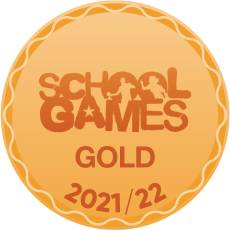Equality Data
Published data for Elton Primary School
Equality information gathered November 2016
Age:
We have 178 children in the school – 96 boys and 82 girls.
The largest year group in school is Year 2 with 29 pupils, the smallest is Reception with 20 pupils.
There is a gender imbalance within the school. In 2016 45.1% of the school were girls which is in the lowest quintile nationally: the national average is 49%. The largest gender difference is in Year 4: there are 17 boys in this cohort but only 9 girls.
Disability
An accessible disabled toilet is available; as are disabled car parking spaces and ramps into all KS1 classes. The school entrance has also been extended in width and an automatic door installed which allows for wheelchair access.
There are no disabled members of staff.
We have 18 children on our SEND Register and 27 on our Early Identification Register. Of the 18 on the SEND Register; 1 has an EHCP/Level 3D funding, 2 have an EHCP/Level 3C funding, 1 has Level 3B funding (but is currently undergoing an assessment for an EHCP), 1 has Level 3A funding and 2 have Early Years Access Funding. The remaining 11’s needs are met through our Element 2 funding.
There are 8 pupils who have Social, Emotional and Mental Health Needs. 2 pupils have a Physical Need.
Gender reassignment
No data is collated by the school about gender reassignment and the pupil or staff population.
Race
The main ethnic group is white British with 78.3% compared to nationally 69.3%.
Our next largest is the travellers group at 7.8% compared to 0.1% nationally.
Then Roma/Gypsy groups make up 4.8% compared to 0.3% nationally.
White or Black Caribbean make up 3.0% compared to 1.5%.
Irish make up 2.4% compared to 0.3% nationally.
White Asian make up 0.6% compared to 1.2% nationally.
White and Black African make up 0.6% compared to 0.7% nationally.
Other white make up 0.6% compared to 5.6% nationally.
Mixed background make up 1.2% compared to 1.9% nationally.
98.8% of school have English as their first language compared to 81.8% nationally.
Performance Trends: ethnicity, disadvantaged children and SEN
RaiseonLine 2016 shows
KS1 –The GRT children have lower attainment in all subjects compared to our White British cohort. Only 25% of the GRT met the expected standard for each subject whereas the White British cohort 70%+ for each subject. This was due to low GRT numbers (4 children) and poor attendance.
KS2 – The GRT children have lower attainment in all subjects compared to our White British cohort. None of the GRT met the expected standard for each subject whereas the White British cohort 65%+ for each subject. The GRT progress scores were also much lower than their White British Peers. This was due to low GRT numbers (4 children) and poor attendance (3 of the children were travelling during the SATs).
KS1 – Disadvantaged children attained higher than their non-disadvantaged peers and higher than national disadvantaged for reading, writing, maths and science. 86% of the disadvantaged children met the required standard in each subject compared with 65% for maths and writing and 73% for reading for their non-disadvantaged peers.
KS2 – Disadvantaged children progressed quicker than their non-disadvantaged peers in our school for all reading, writing and maths. Their progress was above national levels for maths but below for reading and writing (although all of the scores were broadly in line with national figures). The disadvantaged children included some of the GRT cohort and so attendance was an issue for this cohort too. The disadvantaged children attained higher than the schools non-disadvantaged for maths but marginally lower for reading and writing. Whilst their attainment scores were marginally below national levels for all subjects they were still broadly in line with national trends.
KS1 – Only one child was SEN in last year’s cohort so no useful comparisons can be made. Attainment was below national but this was due to the one child not making the expected standard.
KS2 - Only one child was SEN in last year’s cohort so no useful comparisons can be made. Progress was below national but due to the very large confidence band (due to it being only 1 child) the progress was still broadly in line with national.
Religion or belief
No data about Religion is kept.
GENDER
Raiseonline 2016 shows the following:
KS1 - Last year the girls attained much better scores than their male peers. 100% of the girls met the standard in reading but only 50% of the boys; whilst in writing and maths it was 92% compared to 43%. The GRT children were predominantly boys in this cohort and so poor attendance had an effect on the boys scores overall.
KS2 – Whilst a higher percentage of boys attained the expected standard in all subjects compared to their female peers in school, their progress was slower across KS2 than the girls for all subjects. All boys and girl subject areas had progress lower than national levels but this was due to baseline issues and GRT attendance. The boys’ attainment was in line or above national boys attainment for all subjects; whilst the girls were below their national peers levels.
The staff population is predominantly female although there are 2 male teachers.
Sexual orientation
No data about the sexual orientation of pupils, parents or staff is collected or held by the school.
Marriage and civil partnership
When information about changes in marital status or home circumstances is communicated to school, it is recorded in SIMS. Any changes to contact details are recorded in SIMS.
No data is collated by the school about staff or parents’ marital status, apart from names given for home contact and information about whether letters home or reports are to be duplicated and sent to two addresses.
Pregnancy and maternity
The school has developed flexible policies with regard to returning to work and flexible arrangements regarding emergencies relating to children, childcare and parenting. The school has been very willing to allow job sharing to take place to support post maternity leave. Currently we have 3 job shares.
IDACI / Deprivation
Raiseonline states that they school has a deprivation ranking of 0.15 compared to a national average of 0.21.
On the IDACI ranking where a rank of 1 is the most deprived, and 32482 the least deprived, our overall measures are: IDACI Score: 0.134 , Rank of IDACI: 17585
Vulnerable groups
There is currently 1 looked after child on roll.
There are 24 traveller children in school.
There are 0 forces children that attend the school.
Bullying and discrimination
All data is recorded about the prevalence of, for example identity based
bullying, homophobic language or gender based bullying and is recorded on SIMs.


